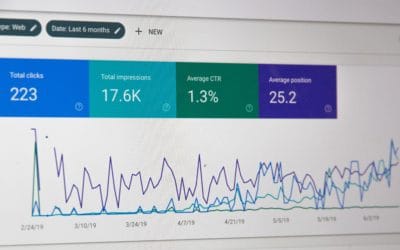Marketing can be expensive, and so most businesses want to get the most possible impact out of their investment. Yet time and again many complain that they feel they just aren’t seeing the ROI on their marketing spend. This problem isn’t new, but fortunately there are some new solutions.
While it may seem like those words ring true today, we have a few more tools at our disposal than Mr. Wanamaker had at the turn of the century. But even the best of digital tools and tracking won’t make up for good strategy. If you learn to avoid these four costly mistakes you’ll get greater ROI out of your marketing dollar.
1. Putting all your eggs in one basket
This folksy old saying is full of timeless wisdom. There are different reasons why businesses put all or most of their marketing budget toward one marketing channel or activity, but it seldom works out to be a wise long-term strategy.
Often this happens because something is working really well. A recent example is the online media company Upworthy. At their peak in popularity Upworthy had monthly traffic upwards of 68 million, and then Facebook changed their algorithm. In a short time their traffic dropped to 20 million and hasn’t significantly recovered since.
Whether traditional media or social and digital media, these channels can, and will change to respond to their customer demands. What once worked won’t always work, and they tend to pivot accordingly, as should you.
The biggest problem upworthy faced was that not only was their marketing siloed to one channel, but they effectively build their brand on “borrowed land.” It’s always wise to diversify, and it’s good to own some of your distribution channels, like your blog for example.
2. Focusing on the product
Once upon a time marketing was all about features and benefits. Today the average consumer has had all the features and benefits they care to hear about. Now consumers have more choice than ever before, and they leverage that choice to get exactly what they are looking for. The old way of creating a demand for something people don’t want simply wont work. People are smarter than that.
 Today nobody cares if your product line includes six different shaving products, even quality ones at that. Now we view ourselves as individuals, we buy because we want to, because something is the right thing for us.
Today nobody cares if your product line includes six different shaving products, even quality ones at that. Now we view ourselves as individuals, we buy because we want to, because something is the right thing for us.
This comparison of a past Old Spice ad compared to a more recent one shows that the brand evolved with the times. I’m sure at one point people were impressed the the features of Old Spice’s product line, but today’s men are more interested in individualism. For one thing, lots of men aren’t clean shaven every day as was more common in the past. Furthermore, young men in particular are more likely to spend money on experiences than stuff. The new ad is all about their customer, not their product.
3. Choosing the wrong channel
Even with a diverse strategy and a focus on the people rather than the product you’ll find your marketing falls flat if you don’t reach people where they are.
Last holiday season I received the most laughable bit of marketing in my office mail. A local salon had no doubt purchased our Chamber of Commerce mailing list and sent postcards to local businesses hoping they might be looking for gift ideas. At the bottom of the card in bold print it said, “Gift Certificates Now Available on our Website.”
At first I chuckled to myself, but then I thought just how sad it was that they had wasted all that money. The reason I know they wasted their money is because they picked the wrong channel (and also persona) for their campaign.
While direct mail can be effective in some cases, it is the least useful way to drive people to a website to complete an online transaction. By my calculation they likely spent over $600 on this direct mail campaign that reached 1000 local businesses. A typical response rate on direct mail is 1-2%, and given that this campaign wasn’t well targeted, I’m going to assume 1% may have responded. After all, how many business owners are likely to buy salon gift certificates as a holiday gift?. At best guess they may have sold 10 gift certificates.
Imagine instead they had used an online channel. If they sent an email to their existing customers, or posted the information on Facebook, Twitter, and Instagram, then people could immediately click on a link that would take them to their online store.
4. Failing to align sales and marketing
So you have a diverse marketing strategy that is customer-centric, and ideally targeted. Great!! What happens next?
Ideally your sales team is working hand in hand with marketing to nurture and close all those leads. Sadly though, in many organizations sales and marketing are siloed departments that seldom work together.
Many companies will say that what they need most is more leads, but we’ve found that leads are only part of the story. One of our clients really wanted to focus on cleaning up their email list and capturing more leads on their website. They also wanted to do a better job of following up with trade show leads and add them to their contact database. We implemented and inbound marketing strategy with them and the results seemed to be outstanding.
Now the company was getting an average of 30 leads a day, something that would no doubt be the envy of many companies like theirs. The problem? They didn’t have people and systems in place to follow up with all the leads, thus their sales hadn’t really changed.
If you want to get ROI out of your marketing efforts you have to align sales and marketing so those leads convert into customers. We like to call it Smarketing.




